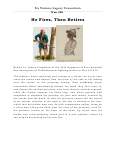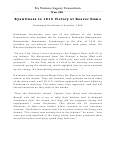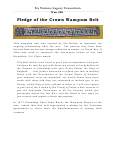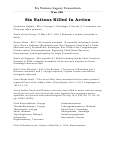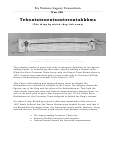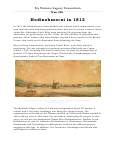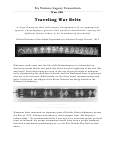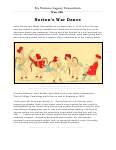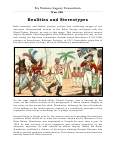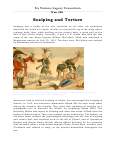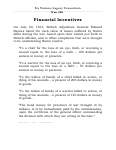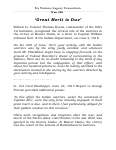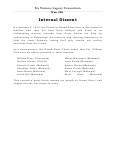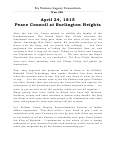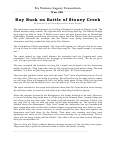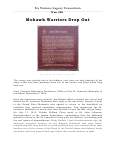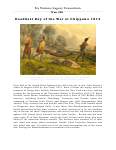Results




- War of 1812 Series (26): He Fires, Then Retires

 Twenty-Sixth in a 62 part series, He Fires, Then Retires is a description by British Lt. James FitzGibbon of the Haudenosaunee (Iroquois Confederacy) warriors fighting tactics in the War of 1812.
Twenty-Sixth in a 62 part series, He Fires, Then Retires is a description by British Lt. James FitzGibbon of the Haudenosaunee (Iroquois Confederacy) warriors fighting tactics in the War of 1812. 
 Twenty-Sixth in a 62 part series, He Fires, Then Retires is a description by British Lt. James FitzGibbon of the Haudenosaunee (Iroquois Confederacy) warriors fighting tactics in the War of …
Twenty-Sixth in a 62 part series, He Fires, Then Retires is a description by British Lt. James FitzGibbon of the Haudenosaunee (Iroquois Confederacy) warriors fighting tactics in the War of … - War of 1812 Series (30): Victory at Beaver Dams

 Thirtieth in a 62 part series, Victory at Beaver Dams describes how Mohawk and Grand River warriors defeated their American opponents in the Battle of Beaver Dams
Thirtieth in a 62 part series, Victory at Beaver Dams describes how Mohawk and Grand River warriors defeated their American opponents in the Battle of Beaver Dams 
 Thirtieth in a 62 part series, Victory at Beaver Dams describes how Mohawk and Grand River warriors defeated their American opponents in the Battle of Beaver Dams
Thirtieth in a 62 part series, Victory at Beaver Dams describes how Mohawk and Grand River warriors defeated their American opponents in the Battle of Beaver Dams - War of 1812 Series (27): Eyewitness to 1813 Victory at Beaver Dams

 Twenty-Seventh in a 62 part series, Eyewitness to 1813 Victory at Beaver Dams is Officer Dominque Ducharme’s fist hand account of the Mohawk Warrior victory over the Americans in the 1813 Battle of Beaver Dams.
Twenty-Seventh in a 62 part series, Eyewitness to 1813 Victory at Beaver Dams is Officer Dominque Ducharme’s fist hand account of the Mohawk Warrior victory over the Americans in the 1813 Battle of Beaver Dams. 
 Twenty-Seventh in a 62 part series, Eyewitness to 1813 Victory at Beaver Dams is Officer Dominque Ducharme’s fist hand account of the Mohawk Warrior victory over the Americans in the …
Twenty-Seventh in a 62 part series, Eyewitness to 1813 Victory at Beaver Dams is Officer Dominque Ducharme’s fist hand account of the Mohawk Warrior victory over the Americans in the … - War of 1812 Series (33): Pledge of the Crown Wampum Belt

 Thirty-Third in a 62 part series, Pledge of the Crown Wampum Belt describes a wampum belt created by the British to represent the ongoing relationship with the Native community after the war
Thirty-Third in a 62 part series, Pledge of the Crown Wampum Belt describes a wampum belt created by the British to represent the ongoing relationship with the Native community after the war 
 Thirty-Third in a 62 part series, Pledge of the Crown Wampum Belt describes a wampum belt created by the British to represent the ongoing relationship with the Native community after …
Thirty-Third in a 62 part series, Pledge of the Crown Wampum Belt describes a wampum belt created by the British to represent the ongoing relationship with the Native community after … - War of 1812 Series (14): Six Nations Killed In Action


 Fourteenth in a 62 part series, Six Nations Killed In Action is a list of Native Chiefs and Warriors who were killed in action during the War of 1812. This list was compiled using available information and may be updated from time to time as new information comes to light.
Fourteenth in a 62 part series, Six Nations Killed In Action is a list of Native Chiefs and Warriors who were killed in action during the War of 1812. This list was compiled using available information and may be updated from time to time as new information comes to light. 

 Fourteenth in a 62 part series, Six Nations Killed In Action is a list of Native Chiefs and Warriors who were killed in action during the War of 1812. This …
Fourteenth in a 62 part series, Six Nations Killed In Action is a list of Native Chiefs and Warriors who were killed in action during the War of 1812. This … - War of 1812 Series (15): Roster of Battles of War of 1812


 Fifteenth in a 62 part series, Roster of Battles of War of 1812 is a chronological list of the battles that occurred during the War of 1812.
Fifteenth in a 62 part series, Roster of Battles of War of 1812 is a chronological list of the battles that occurred during the War of 1812. 

 Fifteenth in a 62 part series, Roster of Battles of War of 1812 is a chronological list of the battles that occurred during the War of 1812.
Fifteenth in a 62 part series, Roster of Battles of War of 1812 is a chronological list of the battles that occurred during the War of 1812. - War of 1812 Series (16): Tehontatenentsonterontahkhwa

 Sixteenth in a 62 part series, Tehontatenentsonterontahkhwa describes the Wampum Friendship Belt, and its historical use by Haudenosaunee (Iroquois Confederacy) as a tool of diplomacy.
Sixteenth in a 62 part series, Tehontatenentsonterontahkhwa describes the Wampum Friendship Belt, and its historical use by Haudenosaunee (Iroquois Confederacy) as a tool of diplomacy. 
 Sixteenth in a 62 part series, Tehontatenentsonterontahkhwa describes the Wampum Friendship Belt, and its historical use by Haudenosaunee (Iroquois Confederacy) as a tool of diplomacy.
Sixteenth in a 62 part series, Tehontatenentsonterontahkhwa describes the Wampum Friendship Belt, and its historical use by Haudenosaunee (Iroquois Confederacy) as a tool of diplomacy. - War of 1812 Series (17): Hodinohsonni in 1812

 Seventeenth in a 62 part series, Hodinohsonni in 1812 is a historical summary describing the state of Haudenosaunee (Iroquois Confederacy) community as it existed in 1812.
Seventeenth in a 62 part series, Hodinohsonni in 1812 is a historical summary describing the state of Haudenosaunee (Iroquois Confederacy) community as it existed in 1812. 
 Seventeenth in a 62 part series, Hodinohsonni in 1812 is a historical summary describing the state of Haudenosaunee (Iroquois Confederacy) community as it existed in 1812.
Seventeenth in a 62 part series, Hodinohsonni in 1812 is a historical summary describing the state of Haudenosaunee (Iroquois Confederacy) community as it existed in 1812. - War of 1812 Series (18): Traveling War Belts

 Eighteenth in a 62 part series, Traveling War Belts describes the visual symbolism depicted in the designs of Wampum Belts, and outlines their relationship to Native spiritual ideas
Eighteenth in a 62 part series, Traveling War Belts describes the visual symbolism depicted in the designs of Wampum Belts, and outlines their relationship to Native spiritual ideas 
 Eighteenth in a 62 part series, Traveling War Belts describes the visual symbolism depicted in the designs of Wampum Belts, and outlines their relationship to Native spiritual ideas
Eighteenth in a 62 part series, Traveling War Belts describes the visual symbolism depicted in the designs of Wampum Belts, and outlines their relationship to Native spiritual ideas - War of 1812 Series (19): Norton’s War Dance

 Nineteenth in a 62 part series, Norton’s War Dance describes John Norton’s participation in a traditional native war dance.
Nineteenth in a 62 part series, Norton’s War Dance describes John Norton’s participation in a traditional native war dance. 
 Nineteenth in a 62 part series, Norton’s War Dance describes John Norton’s participation in a traditional native war dance.
Nineteenth in a 62 part series, Norton’s War Dance describes John Norton’s participation in a traditional native war dance. - War of 1812 Series (20): Realities and Stereotypes

 Twentieth in a 62 part series, Realities and Stereotypes describes the negative racial stereotypes of natives which existed in American and British political cartoon of the early 19th century
Twentieth in a 62 part series, Realities and Stereotypes describes the negative racial stereotypes of natives which existed in American and British political cartoon of the early 19th century 
 Twentieth in a 62 part series, Realities and Stereotypes describes the negative racial stereotypes of natives which existed in American and British political cartoon of the early 19th century
Twentieth in a 62 part series, Realities and Stereotypes describes the negative racial stereotypes of natives which existed in American and British political cartoon of the early 19th century - War of 1812 Series (21): Scalping and Torture

 Twenty-First in a 62 part series, Scalping and Torture describes the use of scalp mutilation in the War of 1812. Employed primarily as a tool of intimidation and psychological warfare by all sides in the conflict
Twenty-First in a 62 part series, Scalping and Torture describes the use of scalp mutilation in the War of 1812. Employed primarily as a tool of intimidation and psychological warfare by all sides in the conflict 
 Twenty-First in a 62 part series, Scalping and Torture describes the use of scalp mutilation in the War of 1812. Employed primarily as a tool of intimidation and psychological warfare …
Twenty-First in a 62 part series, Scalping and Torture describes the use of scalp mutilation in the War of 1812. Employed primarily as a tool of intimidation and psychological warfare … - War of 1812 Series (22): Financial Incentives

 Twenty-Second in a 62 part series, Financial Incentives describes the system British officials had instituted to financially reimburse native warriors and the widows of deceased warriors for losses they had incurred on the battlefield during the War of 1812
Twenty-Second in a 62 part series, Financial Incentives describes the system British officials had instituted to financially reimburse native warriors and the widows of deceased warriors for losses they had incurred on the battlefield during the War of 1812 
 Twenty-Second in a 62 part series, Financial Incentives describes the system British officials had instituted to financially reimburse native warriors and the widows of deceased warriors for losses they had …
Twenty-Second in a 62 part series, Financial Incentives describes the system British officials had instituted to financially reimburse native warriors and the widows of deceased warriors for losses they had … - War of 1812 Series (24): Great Merit is Due

 Twenty-Fourth in a 62 part series, Great Merit is Due Excerpts quotes from letters by British military leaders acknowledging the enormous role Native Warriors had in ensuring a victory over American forces in the War of 1812.
Twenty-Fourth in a 62 part series, Great Merit is Due Excerpts quotes from letters by British military leaders acknowledging the enormous role Native Warriors had in ensuring a victory over American forces in the War of 1812. 
 Twenty-Fourth in a 62 part series, Great Merit is Due Excerpts quotes from letters by British military leaders acknowledging the enormous role Native Warriors had in ensuring a victory over …
Twenty-Fourth in a 62 part series, Great Merit is Due Excerpts quotes from letters by British military leaders acknowledging the enormous role Native Warriors had in ensuring a victory over … - War of 1812 Series (25): 1815 Peace Council at Fort George

 Twenty-Fifth in a 62 part series, 1815 Peace Council at Fort George describes events of the 1815 Peace Council meeting held in Fort George. In attendance where representatives from various Six Nations groups, including The Senecas, Onondagas and Cayugas from Buffalo Creek, The Tonawanda, Allegheny and members of the Grand …
Twenty-Fifth in a 62 part series, 1815 Peace Council at Fort George describes events of the 1815 Peace Council meeting held in Fort George. In attendance where representatives from various Six Nations groups, including The Senecas, Onondagas and Cayugas from Buffalo Creek, The Tonawanda, Allegheny and members of the Grand … 
 Twenty-Fifth in a 62 part series, 1815 Peace Council at Fort George describes events of the 1815 Peace Council meeting held in Fort George. In attendance where representatives from various …
Twenty-Fifth in a 62 part series, 1815 Peace Council at Fort George describes events of the 1815 Peace Council meeting held in Fort George. In attendance where representatives from various … - War of 1812 Series (37): Internal Dissent

 Thirty-Seventh in a 62 part series, Internal Dissent describes how the Six Nations Confederacy Chiefs created a list of community members who they felt were disloyal to the crown.
Thirty-Seventh in a 62 part series, Internal Dissent describes how the Six Nations Confederacy Chiefs created a list of community members who they felt were disloyal to the crown. 
 Thirty-Seventh in a 62 part series, Internal Dissent describes how the Six Nations Confederacy Chiefs created a list of community members who they felt were disloyal to the crown.
Thirty-Seventh in a 62 part series, Internal Dissent describes how the Six Nations Confederacy Chiefs created a list of community members who they felt were disloyal to the crown. - War of 1812 Series (38): Peace Council at Burlington Heights

 Thirty-Eighth in a 62 part series, Peace Council at Burlington Heights, Describes the events of the Peace Council meeting at Burlington Heights on April 24, 1815
Thirty-Eighth in a 62 part series, Peace Council at Burlington Heights, Describes the events of the Peace Council meeting at Burlington Heights on April 24, 1815 
 Thirty-Eighth in a 62 part series, Peace Council at Burlington Heights, Describes the events of the Peace Council meeting at Burlington Heights on April 24, 1815
Thirty-Eighth in a 62 part series, Peace Council at Burlington Heights, Describes the events of the Peace Council meeting at Burlington Heights on April 24, 1815 - War of 1812 Series (40): Roy Buck on Battle of Stoney Creek

 Fortieth in a 62 part series, Roy Buck on Battle of Stoney Creek is an excerpt of an interview with Roy Buck on the subject of the Battle of Stoney Creek
Fortieth in a 62 part series, Roy Buck on Battle of Stoney Creek is an excerpt of an interview with Roy Buck on the subject of the Battle of Stoney Creek 
 Fortieth in a 62 part series, Roy Buck on Battle of Stoney Creek is an excerpt of an interview with Roy Buck on the subject of the Battle of Stoney …
Fortieth in a 62 part series, Roy Buck on Battle of Stoney Creek is an excerpt of an interview with Roy Buck on the subject of the Battle of Stoney … - War of 1812 Series (41): Mohawk Warriors Drop Out

 Forty-First in a 62 part series, Mohawk Warriors Drop Out describes the grievances of the St. Lawrence Mohawks who were denied their war booty (for fighting in the War or 1812) by the British, and subsequently dropped out of the conflict
Forty-First in a 62 part series, Mohawk Warriors Drop Out describes the grievances of the St. Lawrence Mohawks who were denied their war booty (for fighting in the War or 1812) by the British, and subsequently dropped out of the conflict 
 Forty-First in a 62 part series, Mohawk Warriors Drop Out describes the grievances of the St. Lawrence Mohawks who were denied their war booty (for fighting in the War or …
Forty-First in a 62 part series, Mohawk Warriors Drop Out describes the grievances of the St. Lawrence Mohawks who were denied their war booty (for fighting in the War or … - War of 1812 Series (36): Deadliest Day of the War at Chippawa

 Thirty-Sixth in a 62 part series, Deadliest Day of the War at Chippawa describes the deadliest day of the War of 1812
Thirty-Sixth in a 62 part series, Deadliest Day of the War at Chippawa describes the deadliest day of the War of 1812 
 Thirty-Sixth in a 62 part series, Deadliest Day of the War at Chippawa describes the deadliest day of the War of 1812
Thirty-Sixth in a 62 part series, Deadliest Day of the War at Chippawa describes the deadliest day of the War of 1812

